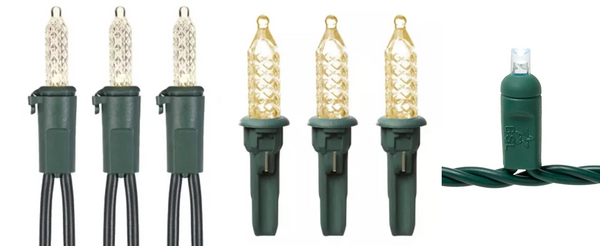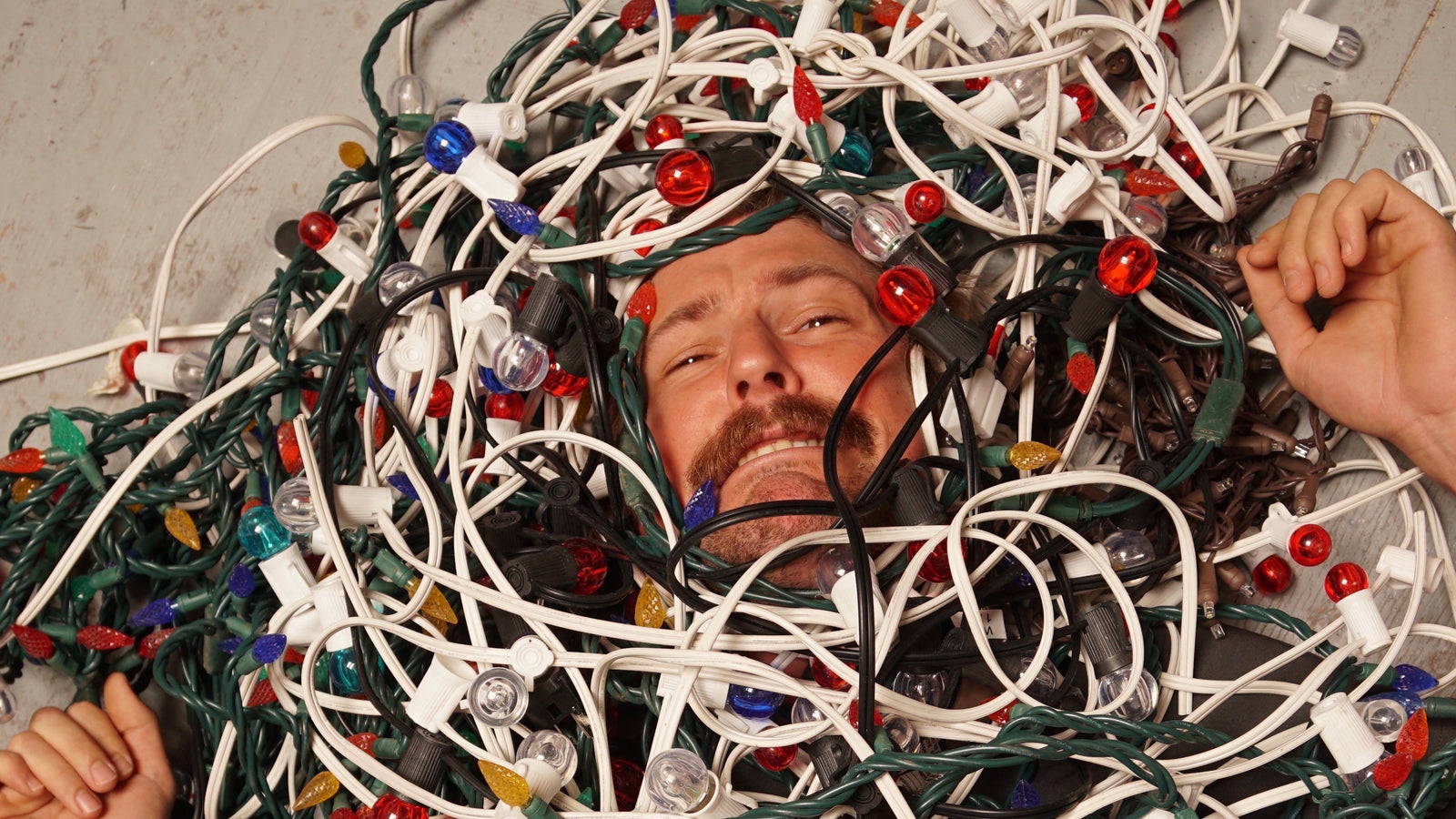Perhaps you’ve had the displeasure of installing big box store lights before, only to realize a few days later that half the string has failed, or one season later that the lights are very dim. Fortunately, there is an alternative! The secret is to shop where professional Christmas light installers shop. Pro installers have a vested interest in ensuring that they aren’t spending their short season fixing lights, but rather installing beautiful displays with lights that last year after year. Not all Christmas lights are made equal and that’s evident from looking at the reviews!
Here’s a typical big box store customer review summary:

So how do you avoid buying bad lights? Here’s what to avoid:
1. Don’t go to big box stores when buying Christmas lights
They haven’t gained the experience to know what is required for Christmas to function reliably in all climates. They are also very price sensitive due to the general competitiveness of their specific industry. Some have also adopted terrible return policies for lights as well and you can’t return them once they are hung. The old adage prevails: “you get what you pay for.”
2. Avoid mini-lights that don’t use “one-piece construction”

Left - Non-singular moulded construction. Centre - Replaceable M5 Christmas lights. Right - Big Star Lights "one piece construction" 5mm mini-lights
Mini-lights are a very basic parallel circuit and if there’s an interruption at one bulb, it can cause other bulbs to not light up as well. These interruptions in current flow are usually caused by corrosion, which is caused by water getting into places it shouldn’t be and then not being able to dry out. This is a frequent occurrence with mini-light that have replaceable bulbs - water is able to get into the lamp husk and corrode. In this kind of product, it is better to have one-piece construction with bulbs that are sealed tight reducing any chances of water penetration.
3. Stay away from lights made from cheap components

All Christmas lights are manufactured in Asia, but their components may not be. For example, our lighted string sets such as mini-lights and C6 lights use polypropylene from the USA to protect the wire from the elements. The higher quality plastic is also more UV resistant which prevents the wire from degrading and drawing more current as it gets older. The resistors are made in Japan which make the lights more stable and less prone to failing. In our retrofit bulbs, we use SMD LED technology, which again is more stable and holds it’s brightness for longer. The plastic also contains UV stabilizers that prevent them from going cloudy with prolonged exposure to the sun.
4. Never choose incandescent lights (or rather - always go with LEDs!)

It goes without saying that LEDs are better for two main reasons: they consume less power and they last much longer. The technology has come a long way in the last five years in that it’s more stable (stays bright much longer), inexpensive, and the warm-white versions look just like the sought after incandescent lights at night. So there’s no longer any good excuse to buy incandescent lights.
5. Keep away from roofline lights with twisted wire

In order to get that clean, professional look with lights on rooflines pointing in one direction, avoid lights with twisted wire. This makes it near impossible to control the orientation of the bulbs. Instead, use a flat wire that not only makes the bulb direction controllable via clips, but it can also be cut to the size of your rooflines.
6. Steer clear of mini-lights with regular plugs if you live in cold or wet climates

Since lighted string sets such as our mini-lights or C6 lights are built as a circuit, it’s important that water doesn’t get inside the plugs because it can cause an electrical short. To combat this, use plugs with coaxial, water-tight plugs that have an o-ring to seal water out. While outdoor rated standard plugs will also work, the coaxial plug system is an extra layer of protection in more demanding climates.
7. Always avoid thin gauge wire in your LEDs
The thinner the copper, the more prone it is to breaking after repeated use or movement. This is particularly noticeable in cold climates where the wire can become hard and brittle more quickly. Thicker 20AWG wire is much more durable than the thinner 22AWG often seen in the lighted strings sets from other suppliers. For retrofit lights that use flat wire, such as with C7, C9, G20, or G30 bulbs, use SPT-2 wire instead of SPT-1. While the copper is 18AWG in both, the insulation is thicker with SPT-2, which not only makes the wire more durable, but allows for longer runs of lights because it can handle more current (up to 8 amps vs. 5 amps).
8. Trust the Experts (We've Tried and Tested!)
In summary, you can safeguard yourself by purchasing from reputable suppliers that have first-hand experience working with large quantities of Christmas lights in the most demanding climates. At Big Star Lights, through trial and error, we’ve determined what works, what lasts, and what looks amazing season after season. Products are always tested for one season before being made available on the store and we stand by our commitment to selling only the highest quality products.

